Water is fundamental for life, so it’s essential any time you’re thinking about survival to make sure that you’ve considered hydration.
This applies to not just trips to the wilderness, like when camping or hunting, but also to general emergency preparedness, whether that’s in a personal bug out bag, a home emergency prep kit, or an all-out apocalypse shelter.
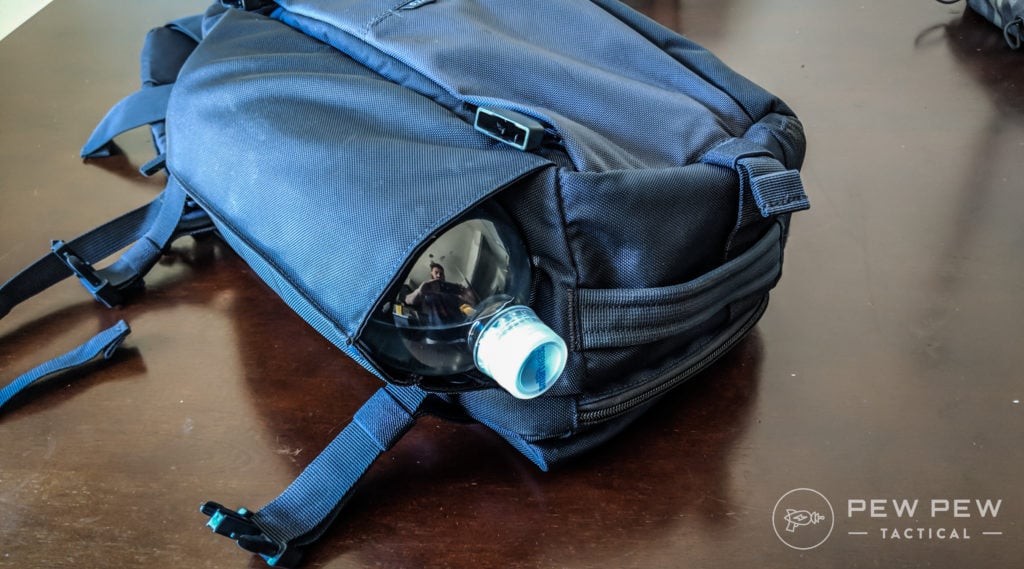
A common mistake that people make for both wilderness survival and emergency preparedness is trying to just store as much water as they think they’ll need, but there are a few problems with this.
For one, water is heavy and takes up a lot of space and we’re talking about situations where weight and space are at a premium.

Second, water can easily spill, leak, or become contaminated without you even noticing, leaving you with no water when you need it.
And finally, what happens if and when you run out of water earlier than expected or have to rely on your supply for longer than you anticipated and have no way of getting more clean water?

So, while you definitely should plan on having some water ready to go for any survival kit, you also need a way to create new potable water continuously.
Filters and purifiers allow you to continually produce more drinkable water and take up less space and weight than water itself, even with extra filters and other maintenance equipment.
Fortunately, there are tons of options out there and I’m going to talk to you about some of the best. So keep reading to learn more or skip on and see what products we recommend!
Summary of Our Top Picks
![]()
![]()
![]() Best Gravity-Fed Filter
Best Gravity-Fed FilterLifeStraw Mission High-Volume Gravity-Fed Water Purifier, 12 L
Gravity fed, filter + purifier, best for families
![]()
![]()
Table of Contents
Loading...
Filters vs. Purifiers
“Filter” and “purifier” are sometimes used interchangeably, but they actually describe different things.
Filters remove particulates, bacteria, and protozoa from water, but not viruses. Purifiers remove bacteria, protozoa, and viruses, but may not remove particulates.
Some filters, especially with advancing technology, are also purifiers.
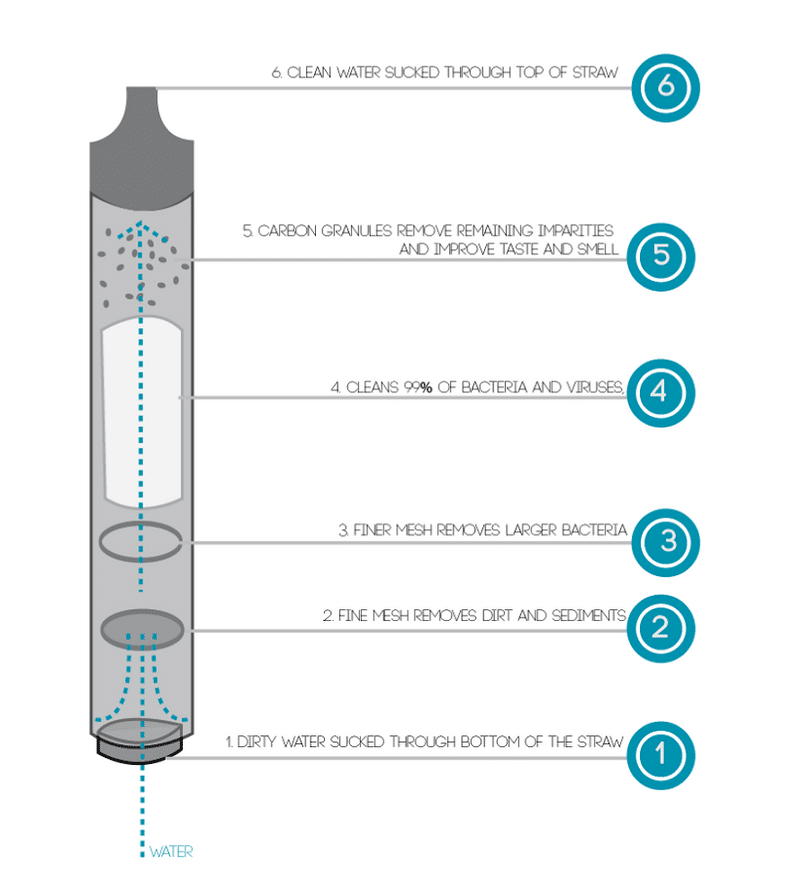
Now you don’t always need virus protection. The more remote an area, the less likely you are to encounter viruses in the water. You can generally research the area that you’re traveling to and find out if you’ll need virus protection or not.
When in doubt, though, go with more protection.
If you need virus protection and have a filter that’s not a purifier, you’ll also want to use a secondary method for removing viruses, whether that’s boiling the water or a separate purifier or purifying treatment.
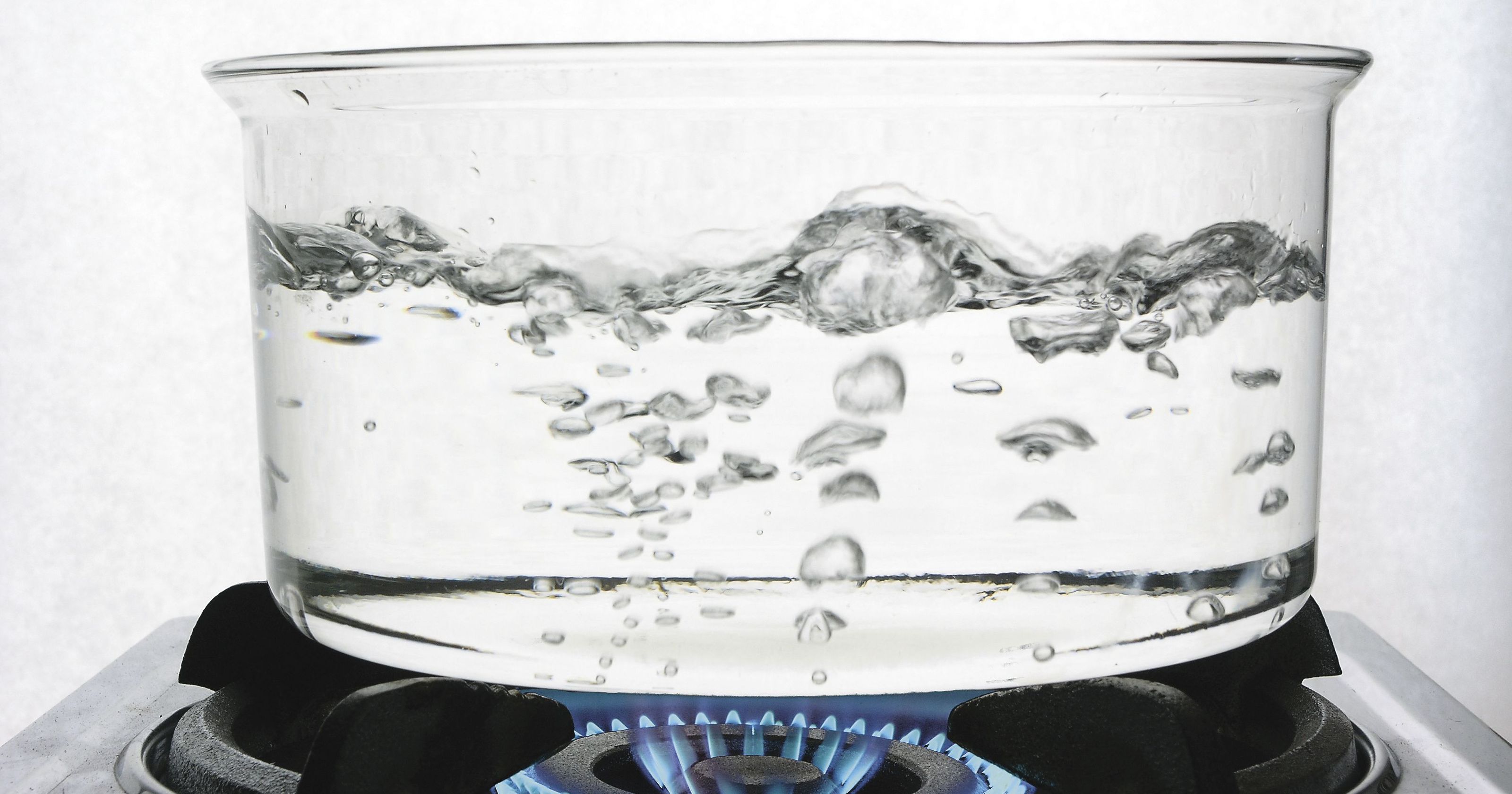
On the other hand, if you have a purifier that’s not a filter, you’ll almost always want a filter to remove particulates.
Filtering water through a piece of fabric with a fine knit, like a bandana, will tide you over if you don’t have a filter, but a filter will get smaller particulates and stand up to more.
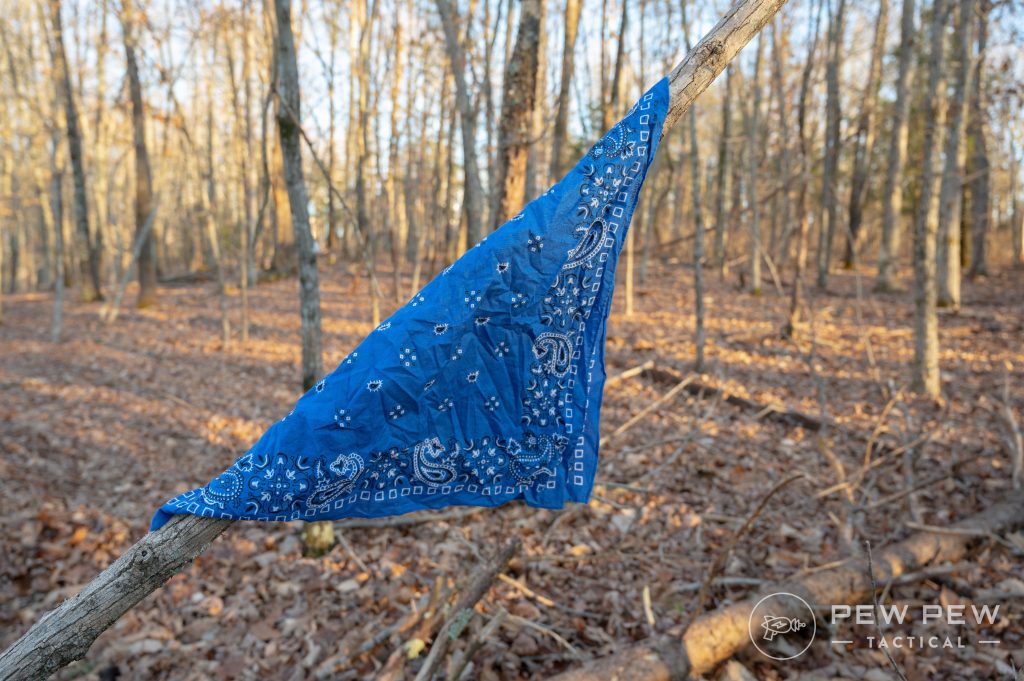
One thing to keep in mind: neither filters nor purifiers filter out toxic chemicals, radiation, or heavy metals. If you’re concerned about these types of contaminants, make sure you’re choosing a filter/purifier that is able to remove them.
Filters and purifiers also generally don’t remove salt from water.
For that, you’ll either need a distillation setup, which you can DIY or purchase pre-fabricated, or a desalinator. These can be pricey, but you, fortunately, won’t need them for most trips.
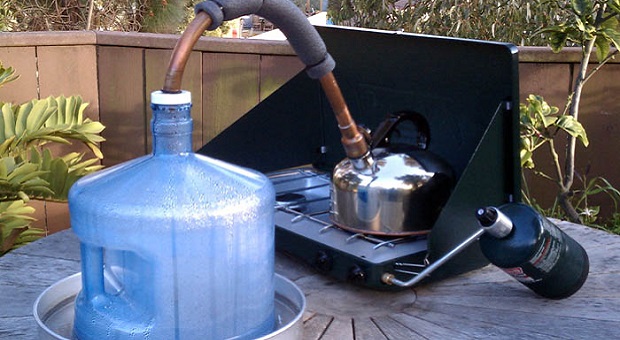
Types of Filters & Purifiers
Filters
Now that you know the difference between filters and purifiers as well as their limitations, let’s go over some of the different types of each.
Straw filters are a convenient and lightweight option for a single person and are great for bugout bags as well as camping or hunting in places where you know you’ll have continuous access to a water source.
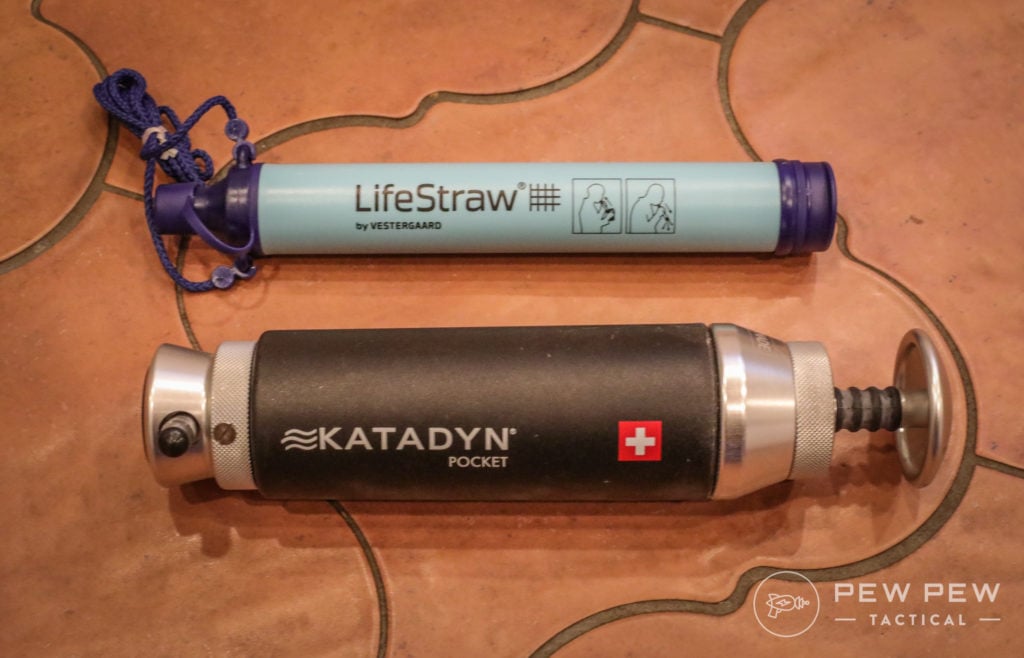
The user just sticks one end into a water source and sucks on the other end, moving the water through a filter and directly into their mouth.
Sometimes straw filters are built into water bottles, so you can put water into the bottle and take it with you without having to filter it while still at the source.

Hand pump filters are exactly what they sound like: the user manually pumps water through the filter.
They’re a lot of work compared to other filter types, but they’re smaller and more portable than gravity-fed filters. Not to mention, they can filter a lot more water than straw filters.
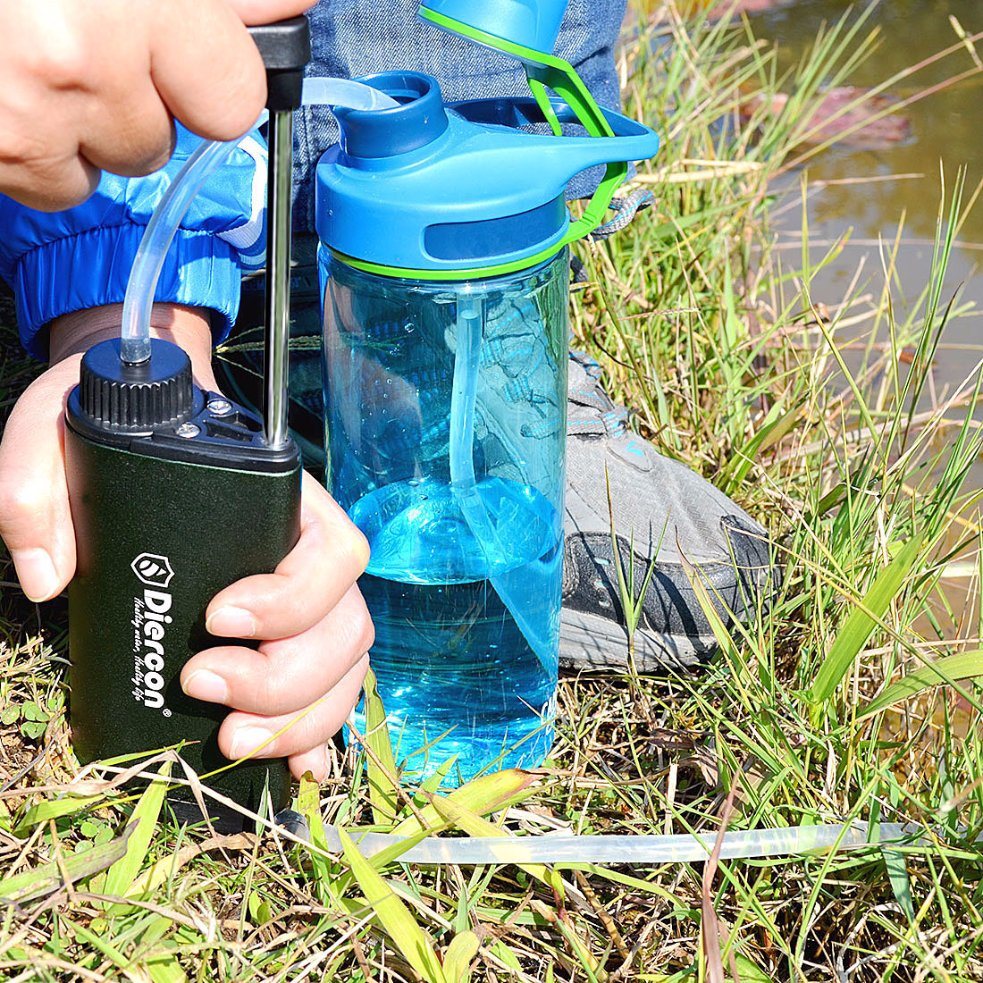
These filters are good for individuals and small groups when you don’t know that you’ll have continuous water access. Often hand pump filters can be screwed directly onto standard wide-mouth water bottle tops and hydration bladders to make it easy to travel with your newly filtered water.
Gravity-fed filters use a system of two bags attached by a hose with a filter in it. Dirty water goes in one bag and is elevated so the water flows through the filter and down into the second bag.
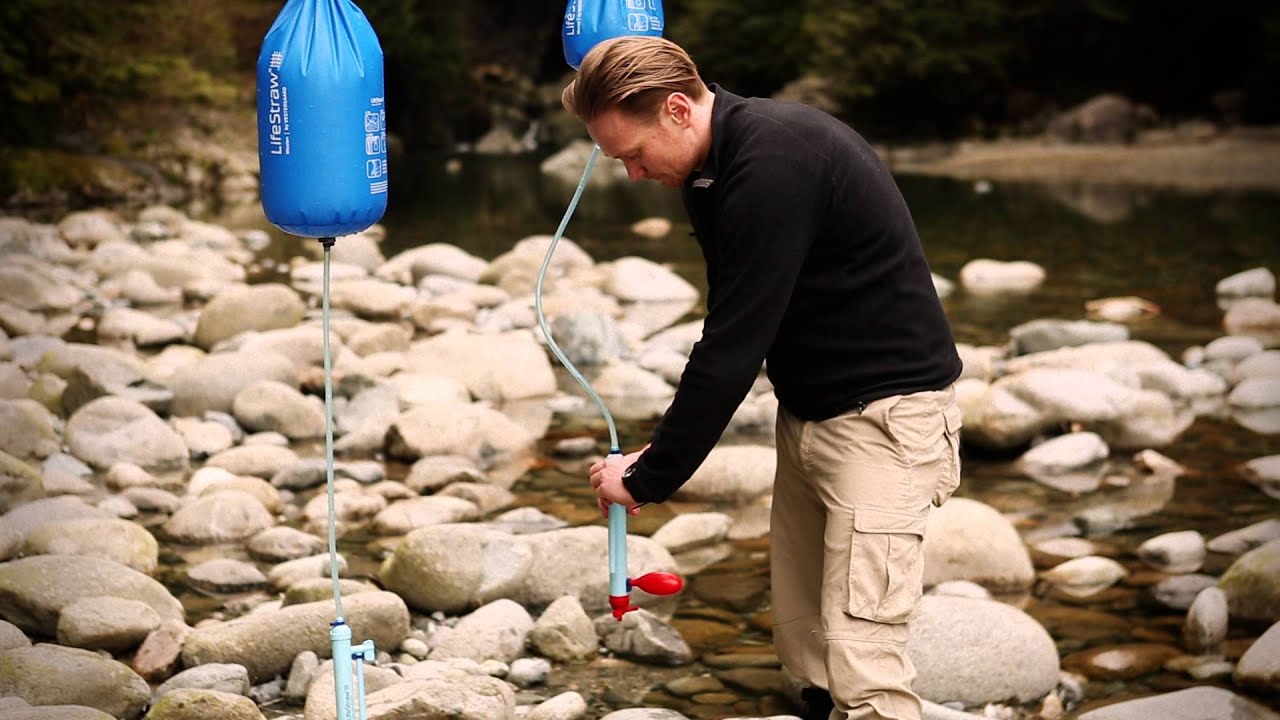
This method is nice because you can filter water in bulk and you can set it up and let it do its thing while you work on your camp or pause for a meal. But it can take some time and requires more equipment than other filter types.
This filter type is usually better for groups or when you plan on staying in the same place for a while.
Inline filters have input and output attachments and can be used alone as straws or attached to bladders, bottles, or gravity bags to work with a variety of filter options depending on your needs.
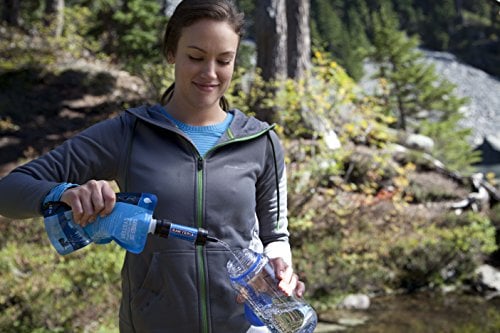
The versatility of these filters makes them an excellent choice if you plan on using your filter in a variety of situations. But they often have a pretty low flow rate (meaning that they filter water slowly).
However, they’re also usually intended to filter the water as an individual drink, in which case flow can be pretty slow.
Purifiers
Chemical purifiers are treatments, usually in the form of drops or tablets, that you add to water and kill viruses, bacteria, and protozoa.
Some types of chemical purifiers leave a gross taste in the water, so having some powdered drink flavoring, like Gatorade or Crystal Light, can be handy.
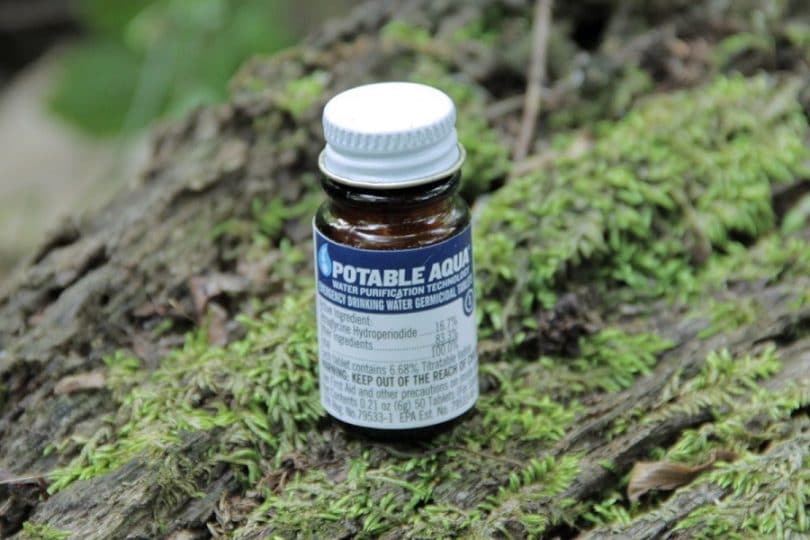
UV purifiers kill viruses, bacteria, and protozoa by exposing the water to UV light.
This is a quick, easy, lightweight method to purify water. Just make sure your unit is adequate to purify the amount of water you need.
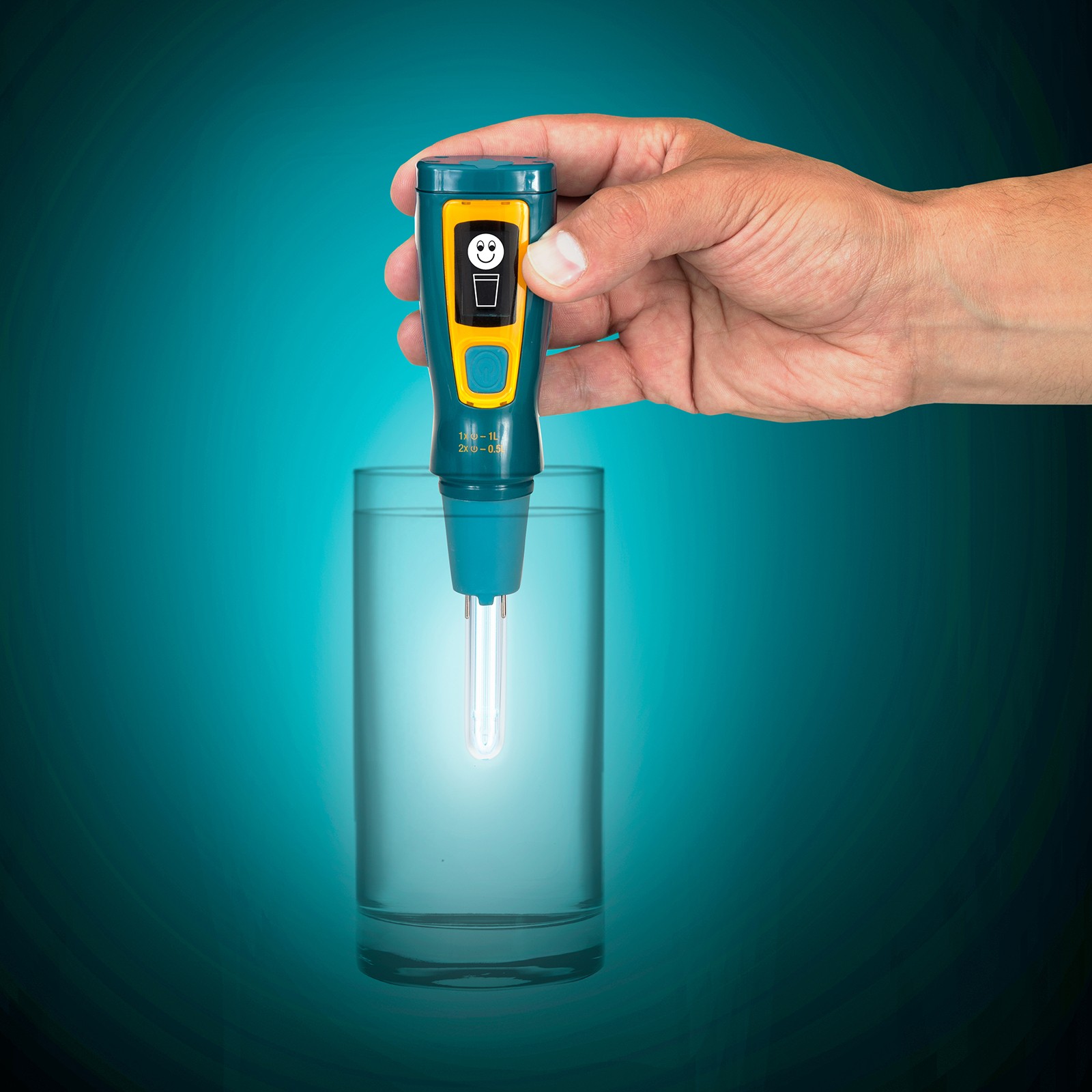
Now that you know the different types of filters/purifiers that you can choose from, let’s talk about some of the best from each category.
Best Survival Water Filters and Purifiers
Straw & In-Line Filters
1. Lifestraw Personal Water Filter
The Lifestraw Personal Water Filter was one of the first straw-type filters to hit the market and is still probably the most popular straw filter. It’s also the one that lives in my bug-out bag.
Prices accurate at time of writing
Prices accurate at time of writing
It’s just 2 ounces, but will filter out sediment, bacteria, parasites, and microplastics out of 1,000 gallons over its lifetime and has no shelf life.
And as a bonus, for every product purchased, Lifestraw provides one year of clean water for a school child in need.
2. Sawyer Mini Filtration System
For a more versatile option, go with the Sawyer Mini Filtration System.
This popular inline water filter comes with a drinking straw attachment and drinking pouch, but can also be attached to any standard 28 mm threaded bottles or pouches and most bladder tubes.
Prices accurate at time of writing
Prices accurate at time of writing
It weighs just 2 ounces, fits in the palm of your hand, and filters down to .1 microns. It removes 99.99999% of bacteria, 99.9999% of protozoa, and 100% of microplastics.
The Sawyer Mini also has a life of 100,000 gallons with proper cleaning between outings and without ever having to replace the cartridge.
What’s your take on the Sawyer Mini? Rate it below.
Pump Filters
3. MSR Guardian Purifier
As a filter and purifier in one, the MSR Guardian Purifier is the top of the line for civilian pump filters. It filters out sediment, bacteria, viruses, and protozoa as small as .02 microns at a flow rate of 2.5 liters per minute.
Prices accurate at time of writing
Prices accurate at time of writing
It also self cleanses as you pump, maintaining a consistent flow rate and eliminating the need to backflush or clean the filter.
The filter cartridges have a lifetime of 10,000 plus liters and are quick and easy to switch out in the field.
4. MSR MiniWorks EX Filter
However, all of this comes with a pretty high price tag, so if you have a lower budget or just don’t think skipping a separate purification step is worth an extra $170 or so, check out the MSR MiniWorks EX Filter.
Prices accurate at time of writing
Prices accurate at time of writing
I personally use the MiniWorks when camping and traveling. It protects against bacteria, protozoa, sediment, and toxic chemicals using ceramic and carbon filter cartridges with a pore size of .2 microns.
The flow rate of the MiniWorks EX is about a liter per minute and has a lifetime of about 2,000 liters. It weighs about a pound.
5. Survivor Filter Pro Portable Water Filter Pump
Now if you want filtration somewhere in between, you can go with the Survivor Filter Pro Portable Water Filter Pump.
Its triple filtration system removes bacteria, protozoa, and sediment down to .01 microns as well as 99.5% of mercury and 93% of lead.
Prices accurate at time of writing
Prices accurate at time of writing
It only weighs 12.8 ounces, has a lifetime of up to 100,000 liters, and is even a little bit cheaper than the MiniWorks.
So what’s the catch? The Survivor Filter Pro only has a flow rate of about a half liter of water per minute.
Are the perks worth it? That depends on how patient you are, how much water you have to filter, and how worried you are about cutting weight.
Gravity-Fed Filters
6. Lifestraw Family
Lifestraw is best known for their original Lifestraw Personal Water Filter, but they actually make a variety of water filters, including one of my favorite gravity-fed water filters, the Lifestraw Mission.
Prices accurate at time of writing
Prices accurate at time of writing
Prices accurate at time of writing
It’s actually a filter and purifier in one, reduces turbidity down to .02 microns, and will provide 18,000 liters of water over the course of its lifetime, which is enough to keep a family of five in drinking water for three years.
Yes, it’s a bit pricey, but if you have a family to think about, it’s a great option.
Purifiers
Speaking of purifying water separately, let’s talk about some of the second steps that you can add to your water treatment plan to make sure that your drinking water is purified.
Tablets are the old standby for water purification.
7. Potable Aqua with PA+ Germicidal Tablets
Potable Aqua is one of the major brands and is the one that I grew up using while camping and still use to this day. Their Potable Aqua with PA+ Germicidal Tablets are my favorite.
Prices accurate at time of writing
Prices accurate at time of writing
The system includes two types of tablets — iodine tablets, which purify the water in just 35 minutes, and neutralizing tablets which remove any taste, odor, or color from the water, including the nasty taste that iodine tablets leave behind.
Each bottle contains 50 iodine tablets, two of which can purify a quart of water. Unopened bottles can last up to four years and opened ones are good for up to a year.
8. Steripen Ultra UV Water Purifier
If you’d prefer a treatment that you can use over and over again without having to resupply, the Steripen UV Water Purifier might be for you.
To use the Steripen, just dip the light end into your water then click once for a half-liter and twice for a full liter.
Prices accurate at time of writing
Prices accurate at time of writing
The Steripen is about 10 times the price of purification tablets, but can purify 50 liters before needing a recharge and can be used 8,000 times.
It’s USB rechargeable and can be plugged into an outlet, USB port on a car or electronic device, or a solar charger.
Choosing Your System & Treating Water
As you can see, you have plenty of options when it comes to water treatment and different options are clearly better suited for different situations.
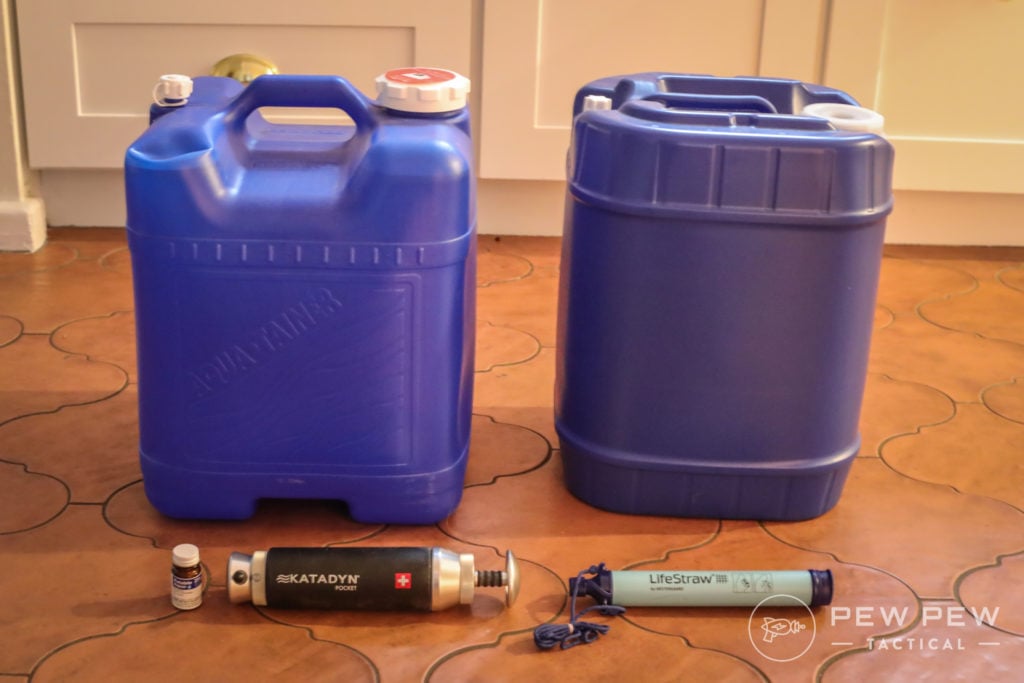
But before I close out, I want to offer a few tips for choosing a water treatment system and for treating water in general.
When you choose the one that you want to go with, make sure you’re considering:
- source water quality
- number of people you’re treating water for
- size and weight of the filter
- ease of field maintenance
- cost of the filter (both overall and per gallon, including the initial investment, filter cartridge, and pre-filter replacements, and cleaning supplies)
You may also want to use a couple of different types of filters and/or purifiers for more complete water treatment and redundancy should one of your filters fail.

However, you should also make sure you know field maintenance for your filter and have the necessary equipment for basic maintenance whenever you take it on an outing.
Next, never ever put treated water where dirty water has been. Once a bucket, bottle, or any other water container has come into contact with untreated water, do not put clean water in it until the container has been sanitized.
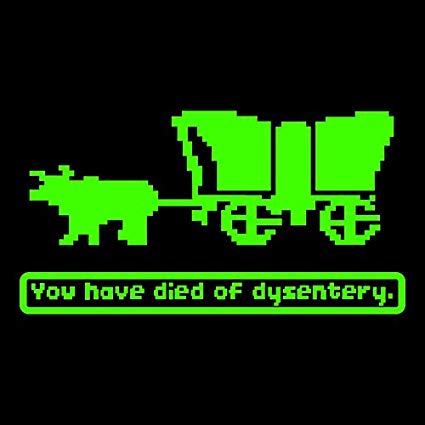
This is how cross-contamination occurs and is alarmingly common.
While it’s important to have all the right tools for treating water and making it safe to drink, it’s also important to know where to find water.
So, make sure you know how to actually find water before any trip where you’ll have to treat it.
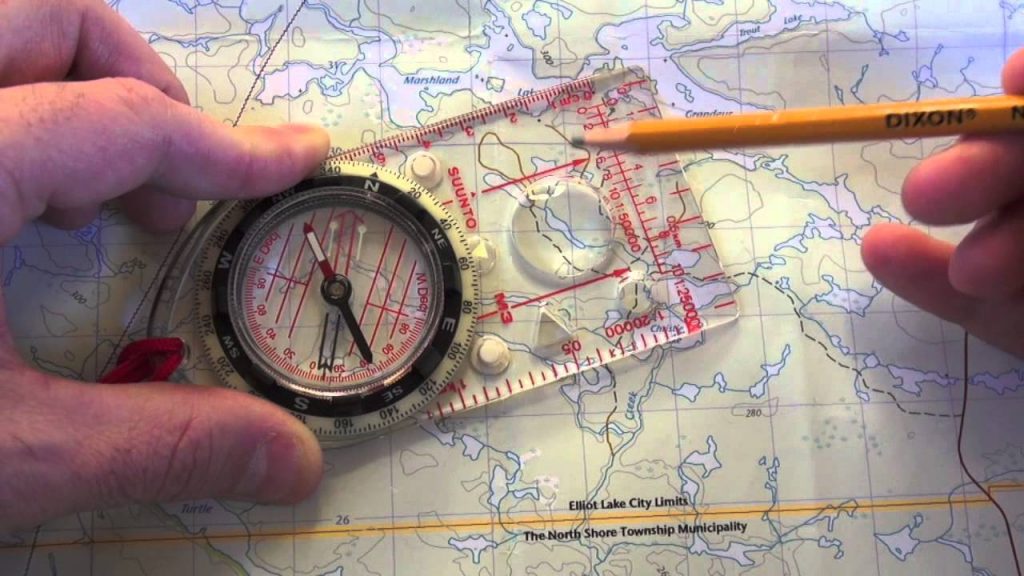
Having a map of the area is a great tool, but creeks depicted on it may be dried up, while other water sources may not appear on the map.
There are tons of tricks out there for locating water that varies in effectiveness depending on your terrain.
For example, looking for vegetation may help when in the desert, but in the forest, you’ll have better luck finding low ground, looking for mud, and listening for running water. Learn a few before you need them.
Conclusion
Water is an essential component in the surviving equation, so make sure you have the right tools ready to use should you need it.
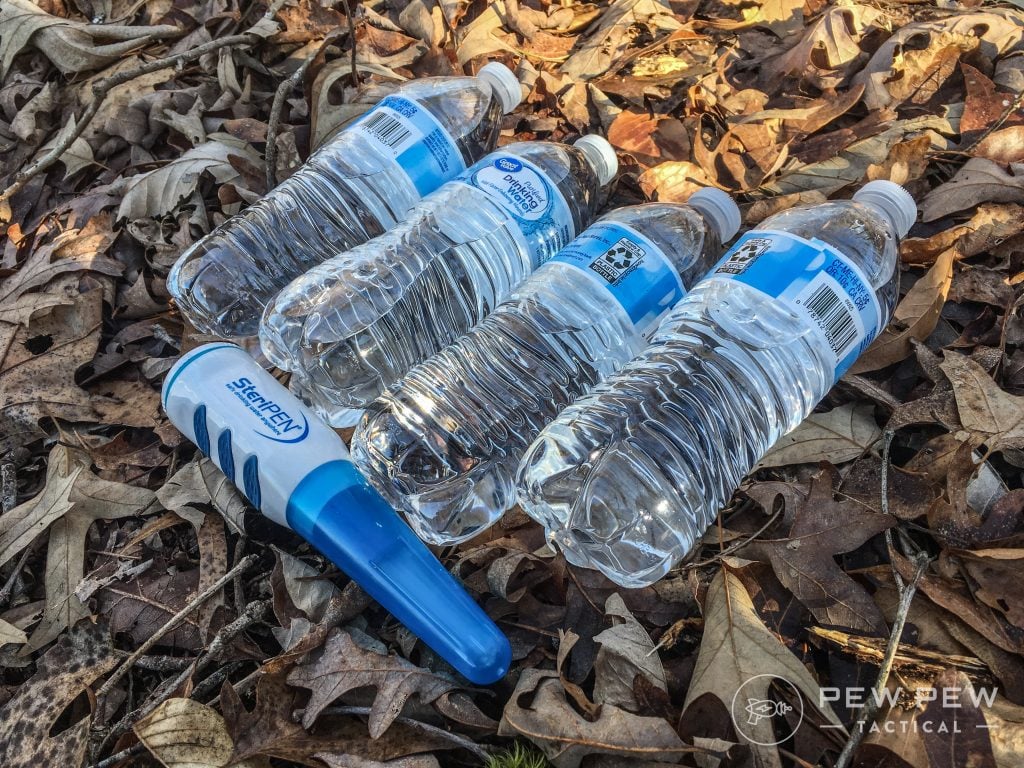
And, remember, don’t forget to brush up on those “how to find water” skills too…
So what situation do you need a water filter for? Do you have a preferred treatment method? Let me know in the comments. Also be sure to check out our articles on Best Water Storage Containers for Emergencies [Tested] and Water Bushcraft Techniques: How To Collect & Store Water.
The post Best Portable Water Filters for Survival & Hiking appeared first on Pew Pew Tactical.




